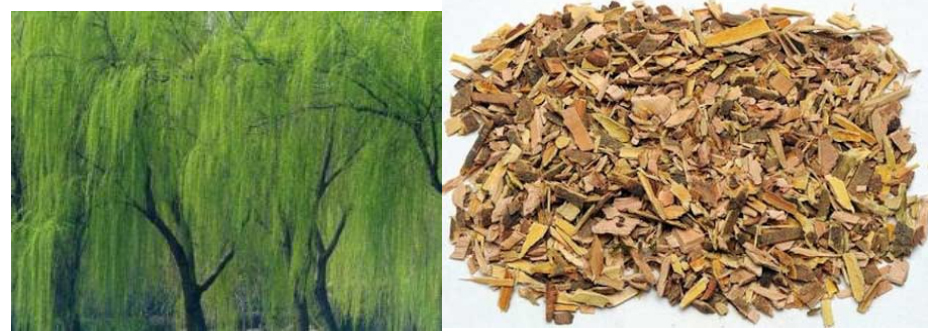New Fashion Design for White Willow Bark Extract Factory in Palestine
New Fashion Design for White Willow Bark Extract Factory in Palestine Detail:
[Latin Name] Salix alba L.
[Plant Source] from China
[Specifications] Salicin 15-98%
[Appearance] Yellow Brown to White powder
Plant Part Used: Bark
[Particle size] 80 Mesh
[Loss on drying] ≤5.0%
[Heavy Metal] ≤10PPM
[Storage] Store in cool & dry area, keep away from the direct light and heat.
[Shelf life] 24 Months
[Package] Packed in paper-drums and two plastic-bags inside.
[Net weight] 25kgs/drum
Brief Introduction
Salicin is a naturally occurring compound found in the bark of several species of trees, primarily North American in origin, that are from the willow, poplar, and aspen families. White willow, from whose Latin name, Salix alba, the term salicin is derived, is the most well known source of this compound, but it is found in a number of other trees, shrubs, and herbaceous plants as well being synthesized commercially. It is a member of the glucoside family of chemicals and is used as an analgesic and antipyretic. Salicin is used as a precursor for the synthesis of salicylic acid and acetylsalicylic acid, commonly known as aspirin.
A colorless, crystalline solid in its pure form, salicin has the chemical formula C13H18O7. Part of its chemical structure is equivalent to the sugar glucose, meaning it is classified as a glucoside. It is soluble, but not strongly so, in water and alcolhol. Salicin has a bitter taste and is a natural analgesic and antipyretic, or fever reducer. In large quantities, it can be toxic, and overdoses may lead to liver and kidney damage. In its raw form, it may be mildly irritating to skin, respiratory organs, and eyes.
Function
1. Salicin is used to ease pain and reduce inflammation.
2. Relieve acute and chronic pain, including headache, back and neck pain, muscle aches, and menstrual cramps; Control arthritis discomforts.
3. Relieve acute and chronic pain.
4. It has the same effect on the body as aspirin without any of the side effects.
5. It is an anti-inflammatory, a fever reducer, an analgesic, an anti-rheumatic, and an astringent. Specifically, it helps to relieve headaches.
Application
1.Anti-inflammatory, anti-rheumatic,
2.Reduce a fever,
3.Use as an analgesic and astringent,
4.Relieve headache,
5.Ease pain caused by rheumatism, arthritis, and carpal tunnel syndrome.
Product detail pictures:
Related Product Guide:
Our company has been focusing on brand strategy. Customers' satisfaction is our best advertising. We also supply OEM service for New Fashion Design for White Willow Bark Extract Factory in Palestine , The product will supply to all over the world, such as: Romania, Swansea, Austria, we always keep our credit and mutual benefit to our client, insist our high quality service to moving our clients. always welcome the our friends and clients to come and visit our company and guid our business, if you are interested in our products, you can also submit your purchase information online, and we will contact you immediately, we keep our highly sincere cooperation and wish everything in your side are all well.
A racy, raunchy comedy spotlighting four unlikely friends at their 20th college reunion on a golf course. A con artist, a millionaire with a hot young trophy wife, an oversexed family man and a frustrated executive relive their crazy, carefree youth wild sex, hilarious pranks, boozing, bonding and rivalry – as 1985 comes to retro life. The “boys” learn to grow up the hard way as they play high stakes golf, deal with their disapproving women, and keep on partying to a pounding disco beat. With Kevin Dillon (Entourage, Platoon)
Directed by William Dear, 2006
Starring Kevin Dillon, John Shaw, Chris Gauthier
Directed by: William Dear
2006
Starring Kevin Dillon (Entourage), Beverley Elliott (Once Upon a Time), Chris Gauthier (Eureka), Nicole Oliver (Littlest Pet Shop), Matty Finochio (Night at the Museum).
Watch more free movies at Popcornflix.com, or on the Popcornflix app available on mobile devices, Roku, Xbox, Sony PlayStation, and many more!
To find out more, go to https://bit.ly/BeautyBlend
The factory technical staff gave us a lot of good advice in the cooperation process, this is very good, we are very grateful.







